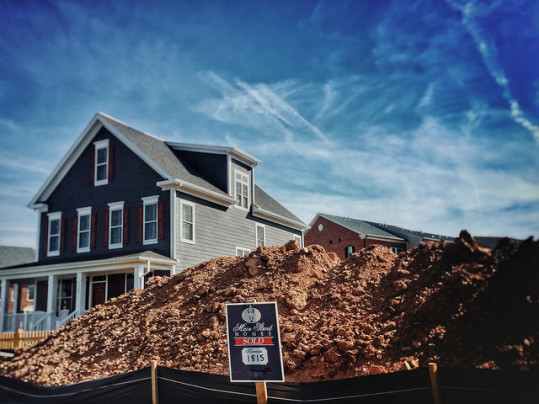According to the Mortgage Bankers Association’s Weekly Applications Survey, demand for mortgage applications was 38 percent higher last week than during the same week one year ago. Largely driven by refinance demand, the year-over-year improvement has benefited from mortgage rates remaining near record lows. But purchase demand is also up over last year. In fact, demand for loans to buy homes is now 13 percent higher year-over-year. Week-over-week results, on the other hand, look a little different. For example, last week’s results found a 2.6 percent drop in the number of requests for mortgage applications. Michael Fratantoni, MBA’s chief economist, said the United Kingdom’s decision to leave the European Union was behind some of the volatility. “Whether the impact of Brexit will be contained to the initial shock of the ‘Vote Leave’ victory or will have a longer-term impact on markets is unclear …” Fratantoni said. “MBA’s best guess at this point is that the impact on the mortgage market will be to keep mortgage rates lower for longer, leading to another pickup in refinance activity in the near future.” Last week, average rates varied depending on the type of loan. Interest rates for 30-year fixed-rate mortgages with conforming loan balances were down. So were rates on 15-year fixed-rate loans. Rates for FHA loans were unchanged from one week earlier and 30-year loans with jumbo balances increased slightly. The MBA’s weekly survey has been conducted since 1990 and covers 75 percent of all retail residential mortgage applications. More here.
Archive for June 2016
Survey Finds Home Prices On The Rise
The S&P/Case-Shiller U.S. National Home Price Index is considered the leading measure of U.S. home prices. Released monthly, the index looks at home price movement on both a monthly and annual basis. According to the most recent release, home prices are up 5 percent over last year’s level. David Blitzer, managing director and chairman of the index committee at S&P Down Jones Indices, says prices continue to rise, though there is some uncertainty on the horizon. “The housing sector continues to turn in a strong price performance with the S&P/Case-Shiller National Index rising at a 5 percent or greater annual rate for six consecutive months,” Blitzer said. “The home price increases reflect the low unemployment rate, low mortgage interest rates, and consumers’ generally positive outlook. One result is that an increasing number of cities have surpassed the high prices seen before the Great Recession … However, the outlook is not without a lot of uncertainty and some risk.” According to Blitzer, economic uncertainty caused by events in Europe and the U.S. election could have an effect in the coming months. In addition, the index found prices beginning to soften in some markets. For example, the latest release shows 16 of the 20 cities included in the index having experienced either a price decrease or smaller increases on a month-over-month basis. More here.
Americans See Housing As Key To Security
A recent survey from the MacArthur Foundation found Americans overwhelmingly feel that affordable housing is an important part of achieving economic security. In fact, 85 percent of respondents said it was very important to achieving a secure, middle-class lifestyle. The only thing that ranked higher was a good job. Still, a majority of participants also said affordability was a problem in America and that it is more difficult to find an affordable place to live now than it was for previous generations. Julia Stasch, president of the MacArthur Foundation says too many Americans feel their dreams of owning a home are unattainable. “Too many Americans today believe the dream of a decent, stable home, and the prospects for social mobility, are receding,” Stasch said. “Having a decent, stable, affordable home is about more than shelter. It is at the core of strong, vibrant, and healthy families and communities. This survey demonstrates that the public wants action to address the nation’s real and pervasive housing affordability challenges.” The feeling that something should be done to address the issue is strong, with 86 percent of renters and 71 percent of homeowners agreeing that elected leaders should be making affordable housing a priority. More here.
Sales Of Newly Built Homes Fall In May
New home sales fell in May, according to new numbers released jointly by the U.S. Census Bureau and the Department of Housing and Urban Development. After soaring to an 8-year high the month before, sales dropped lower than economists expected, falling 6 percent from April. But despite the decline, sales remain 8.7 percent above last year’s level. Regionally speaking, the report showed significant differences between sales in some parts of the country compared to others. For example, new home sales tumbled 33 percent in the Northeast, while gaining 12.9 percent in the Midwest. The South, on the other hand, was nearly unchanged from the previous month and the West saw a double-digit decline. Also in the report, the median price of a new home rose to $290,400; the average price was $358,900. In recent years, both new home sales and construction have shown great improvement. Much of that improvement has taken place at the higher end of the market, however, raising the price of a typical new home. An increase in the number of new homes built at affordable prices would be good news for the overall market, as it would help relieve upward pressure on prices while providing home buyers with more choices. More here.
Existing Home Sales Hit 9-Year High
New estimates from the National Association of Realtors show home sales at their highest annual pace since February 2007. In fact, sales of previously owned homes increased 1.8 percent in May, marking the third consecutive monthly sales gain. Lawrence Yun, NAR’s chief economist, says most of the sales activity is from repeat buyers. “This spring’s sustained period of ultra-low mortgage rates has certainly been a worthy incentive to buy a home, but the primary driver in the increase in sales is more homeowners realizing the equity they’ve accumulated in recent years and finally deciding to trade-up or downsize,” Yun said. “With first-time buyers still struggling to enter the market, repeat buyers using the proceeds from the sale of their previous home as their down payment are making up the bulk of home purchases right now.” Regional results show sales up in the South, West, and Northeast. The Midwest, on the other hand, saw a 6.5 percent decline – though sales remain 3.2 percent above last year’s level. Also in the report, the number of homes available for sale rose in May. At the current sales pace, unsold inventory represents a 4.7-month supply. Typically, a six month supply is considered a healthy market. More here.
Mortgage Rates At Lowest Level In 3 Years
According to the Mortgage Bankers Association’s Weekly Applications Survey, average mortgage rates fell to their lowest level in three years last week. In fact, rates for 30-year fixed-rate mortgages with conforming loan balances dropped to levels last seen in May 2013. Rates for jumbo loan balances were also down, falling lower than they’ve been since January 2011. Lynn Fisher, MBA’s vice president of research, says mortgage rates declined due to concerns about events in Europe. “Rates fell on concerns that Britain may vote to leave the European Union later this week. Although beliefs about the likelihood of an exit have since moderated, the ‘Brexit’ vote promises to bring continued volatility to markets,” Fisher told CNBC. Because of the rate drop, refinance activity – which is more sensitive to rate fluctuations – rose 7 percent from the previous week. Purchase demand, on the other hand, slipped 2 percent from one week earlier. Still, overall demand for mortgage applications is now 35 percent higher than it was at the same time last year. The MBA’s weekly survey has been conducted since 1990 and covers 75 percent of all retail residential mortgage applications. More here.
Are First-Time Home Buyers Ready To Buy?
Results from a recent survey conducted by Genworth Mortgage Insurance at the 2016 Mortgage Bankers Association Secondary Conference in New York found that the vast majority of mortgage professionals are expecting the number of first-time home buyers to grow in the near future. In fact, nearly 80 percent said the share of first timers active in the market will either continue at current levels or increase by at least three percentage points. That would be an encouraging sign for the housing market, as the percentage of first-time buyers has lagged in recent years. However, with affordability conditions still favorable in many markets and an increasing number of millennials reaching average home-buying age, industry insiders expect to see climbing demand among younger Americans. Rohit Gupta, Genworth’s president and CEO, said the mortgage industry has to be prepared to support these buyers. “To support this demand, we must stay true to the great strides we have made in improving underwriting quality, making private capital available, and expanding the availability of prudent and affordable low down payment mortgages,” Gupta said. “Under these circumstances, it is important that all industry participants continue to work to ensure we have an accessible, efficient, and innovative environment for new mortgage originations.” More here.







